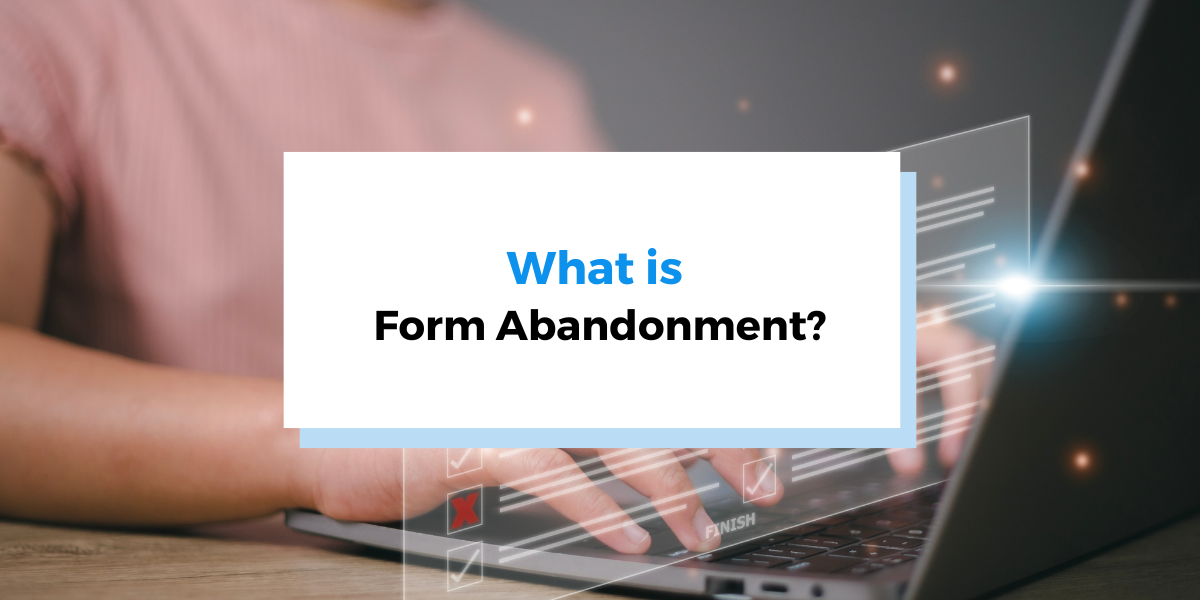Today, many of our most-used services follow the subscription model.
Whether it be Blue Apron for your meals, Stitch Fix for your clothes, Slack and Asana for work, or Netflix and Spotify for your entertainment, you can hardly look around a room before seeing something you’re paying a subscription for.
The software landscape has changed drastically to reflect this trend over the last few years, too.
SaaS companies have realized the exciting potential of the pricing structure that does away with one-time purchases and instead builds long-term customer relationships.
And though there are many benefits that come with the recurring revenue brought on by the subscription model, within that model, it also becomes much more important to ensure your customer subscription management is handled with the best quality possible.
Customer retention becomes paramount, and that’s where SaaS subscription management comes in.
In this post, we’ll take a closer look at what SaaS subscription management means and how it can make or break a business.
Jump to section:
What Is SaaS Subscription Management?
Online Subscription Management vs. Recurring Billing
Challenges of Managing SaaS Subscribers
Benefits of SaaS Subscription Management
How to Find the Right Solution?
What Is SaaS Subscription Management?
In the old days, many companies got away with ignoring their customers after the purchase of the product. But if your company has a subscription-based pricing model, you can’t afford to neglect a single aspect of an account’s lifecycle.
By definition, each subscriber is a recurring customer.
Their relationship with your business lasts only as long as you continue to impress them with the value, service, and attention you provide.
Subscription management is the umbrella term that refers to the process of managing your customer’s entire account lifecycle.
By staying on top of your customers’ accounts from start to finish, your subscription management system will facilitate a smooth and pleasant experience that keeps payments as painless and unnoticeable as possible while elevating your service to something as enjoyable and valuable as it can be.
Online Subscription Management vs. Recurring Billing
Subscription management may sound like recurring billing, but the two terms are simply connected, not synonymous.
Recurring billing is only one part of subscription management.
The term ‘recurring billing’ refers to the process of billing your subscribers on a regular basis—the most common subscription models bill monthly or annually.
If your company uses billing software, the process of collecting payments, sending receipts and/or invoices, as well as charging pre-saved payment methods (such as credit and debit cards, Stripe, Paypal, bank transfer, etc.) is automated.
Subscription management, on the other hand, is the term for all actions and concerns related to managing a subscriber’s account.
Your subscription management process includes billing and invoicing, but it also includes all other actions associated with maintaining your customer’s account throughout their relationship with your company.
This includes:
- Sales and onboarding
- Tracking customer preferences
- Billing
- Customer service and support
- Reporting and analytics
- Email communication
- Making changes to subscription levels
- Managing demos and trials
- Issuing credits or refunds
These kinds of activities require more flexibility and manual control than an automated recurring billing system alone can handle.
Main Challenges Of Managing SaaS Subscribers
When your customers are by definition in a long-term relationship with you, it becomes crucial to manage your subscribers’ accounts in a way that keeps them satisfied with every aspect of your business.
This can be quite challenging.
Let’s take a look at what managing your SaaS company’s subscribers entails.
1. Flexible Billing Frequency
When you think of recurring billing, the first examples that come to mind might be the subscription models of Netflix or Spotify, whose customers have unlimited access to the platforms’ services for a flat monthly fee.
This subscription model seems simple, easy to use, and manage.
However, in the world of SaaS, recurring billing becomes much more complicated.
Customers are likely to have unique needs and preferences, ranging from their billing frequency to the selection of your services from which they’d like to pick and choose.
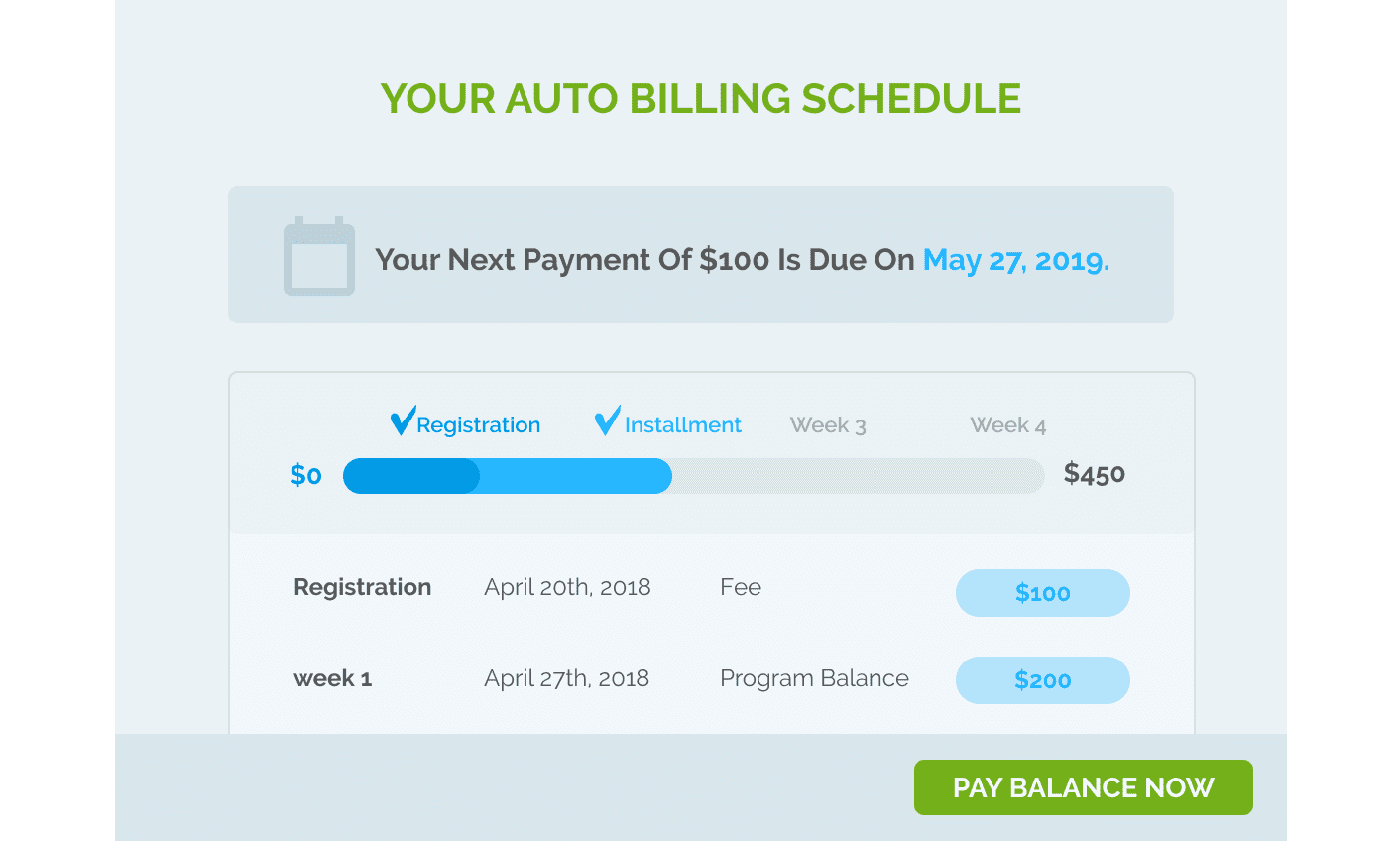
Your customers will want to be able to choose the billing frequency to match their needs—and many would appreciate the option to start with a free trial or promotional period.
If you use a recurring billing model, you’ll need a management system that allows for varied frequency of billing, such as monthly, quarterly, semi-annually, or annually.
There is a lot of complex data that goes into managing each subscribers’ billing needs, such as:
- Initiating billing at the end of a trial period
- Processes and policies for retrying failed credit card transactions
- Sending invoice and receipt emails to customers
- Automatic cancellation and upgrade notifications
Your accounting department or subscription management software should be able to juggle all of those aspects.
2. Flexibility in Billing Plans
Don’t forget that your management system will likely need to handle not only billing frequency, but a selection of subscription tiers to match your customers’ preferences.
Not every customer will want to pay top-dollar for a complete suite of your services, which is why it’s best to let your customer choose the terms that fit best their needs at a price point that’s acceptable for them.
This strategy makes your platform affordable to a diverse range of users with varying needs.
Of course, the more options you offer, the more complex your billing process becomes.
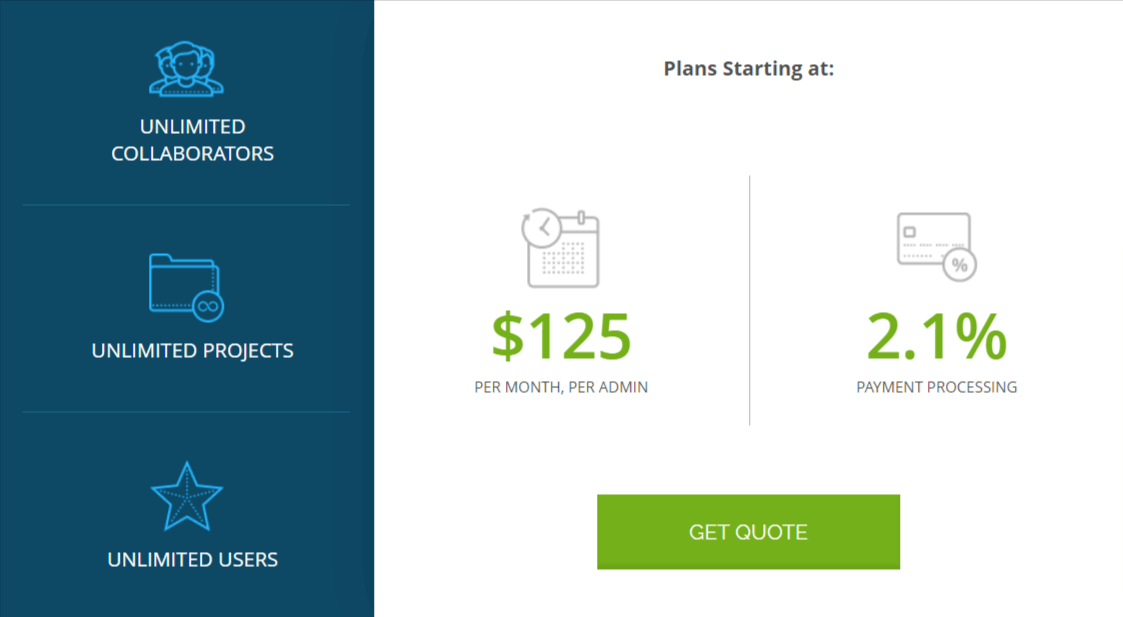
You’ll need a subscription billing solution that’s customizable and able to handle complicated account settings.
As your subscriber number grows, you’ll face the challenges of scaling your recurring billing model as well.
Your subscription management system will need to issue invoices based on the agreed-upon terms for each subscriber.
Again, this will require managing and tracking dozens of types of customer data, such as:
- Contract terms
- Usage
- Billing period and renewal date
- Software version
- Sales rep and/or channel
- Customer details such as location, contact information, and payment method
The billing solution you opt for will have to be able to account for all of the subscription tiers you offer.
3. Secure Payments
In today’s digital landscape, identity theft and credit card fraud are much too common—and your customers know it.
In order to do business with your SaaS company on a regular basis, your subscribers need to feel confident that they can share their credit card data or bank account information safely when making a payment through your website.
Therefore, your payment process should create a safe environment for customers.
You will achieve this by establishing a secure connection between your customer’s browser and your company’s server.
Alternatively, if you use a billing solution to handle automatic payments, ensure that it’s payment card industry (PCI) compliant and up to current security standards.
4. Managing Failed Payments
If your company employs a recurring payments model, you stand to see several benefits compared to other more traditional structures, such as regular revenue and long-term customer relationships.
Nevertheless, the recurring payments model comes with its own challenges, including a higher transaction frequency, meaning that it requires a more complex tracking system.
It becomes much more crucial to have a system that accurately tracks every transaction.
The easiest recipe for customer loss is to send an incorrect invoice or bill the customers twice for the same subscription.
Conversely, it can be frustrating for both parties if your accounting team has to track down and rectify failed credit card or debit card payments manually.
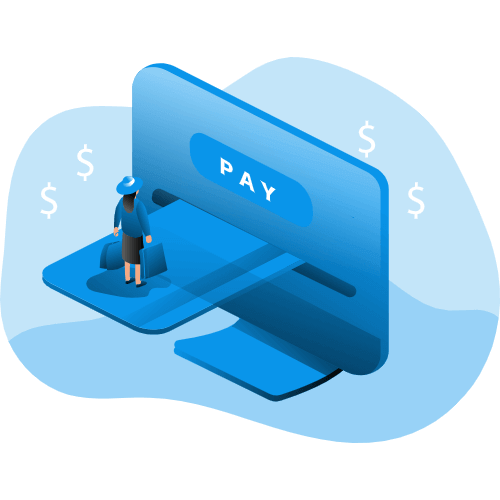
Your subscription management system should be able to spot a failed payment, missed due date, or upcoming expiration of your customer’s payment method.
In an ideal scenario, it would send automated alerts of failed transactions to the customer.
Additionally, that system would notify you of any issues with enough time to prevent subscription interruption or long-term customer service issues.
As a SaaS company, your goal should be to minimize your customer’s focus on what they’re paying you—and maximize their focus on how much value they’re getting out of your product.
Subscription management software can help reduce the number of errors and failed payments and keep customers satisfied with your service.
5. Customer Messaging For Handling Billing and Errors
Whenever there’s an error, whether that’s on the customer’s end or your company’s backend processes, it can be challenging to ensure that your customer receives prompt and accurate alerts.
Therefore, your messaging needs to be simultaneously fast, clear, and secure.
Keeping your customer data confidential is just as important as communicating issues in the first place.
Any transaction errors or invalid billing information should be dealt with swiftly and securely, which is difficult to manage at scale without an automated management system.
6. Multi-Currency and Multi-Language Support
Finally, if you have customers from around the world, it’s a good idea to provide support in multiple languages and currencies.
Your subscribers are likely most comfortable interacting with your business on their own terms.
Therefore, you’ll need to be able to communicate in their home language and accept payments in their home currency.
Many SaaS startups assume that conducting all business in USD will be sufficient.
However, for maximum customer satisfaction, it’s best to support as many local currencies as possible.
Of course, offering multi-currency support can add more complexity and overhead on your end—but customer satisfaction is often worth the expense.
For new SaaS companies, it may be a good compromise to start by offering the most common languages and currencies for your customer base and then expand into more options as you are able.
Benefits of SaaS Subscription Management
At this point, you probably agree that managing SaaS customers requires a complex process and would probably be most successful with software specifically designed for the task.
Let’s go over five benefits a SaaS subscription management tool brings to your company’s performance.
1. Better SaaS Onboarding
Since SaaS subscriptions depend on monthly recurring billing, it pays to set an amazing first impression so that customers are locked in for the long haul.
That’s where customer onboarding comes in.
Your customer onboarding process should effectively introduce the customer to your product. After all, if they don’t know how to use your product, they won’t continue to pay for it, right?
The automated SaaS subscription software should come with an onboarding process that includes detailed tutorials and instructions that can easily and quickly familiarize your subscribers with all of your product’s features.
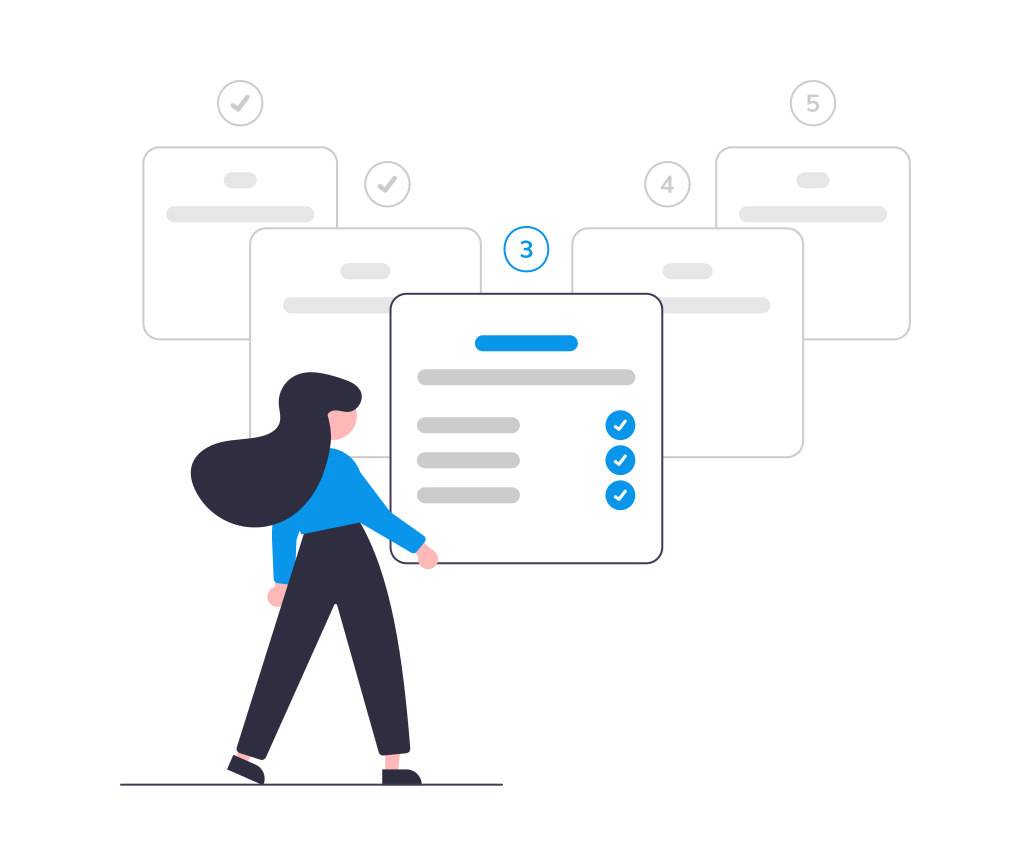
It’s crucial to show your users the value of your product as quickly as possible.
This is particularly important when you’re offering a free trial.
When setting up your SaaS subscription management process, make sure to create a workflow that allows for both onboarding and offboarding in an efficient, thorough manner.
2. Sales Process Automation
The sales process will never be completely automated—because every customer responds best to personalized communication and authentic problem-solving.
This is equally true for individual and B2B clients.
However, even so, it’s possible to automate various elements of your sales process.
For example, your automated sales process might include:
- Sending out an automated email notification immediately after subscribing
- Notifying customers of failed payments or incorrect payment information
- Sending email campaigns for different points along the sales funnel, including abandon-cart messages
- Delivering invoices and receipts
With a system that does the hard work for you of providing efficient service along each step of the customer journey, you’ll have more free time to concentrate on what can’t be automated: creating amazing products for your customers.
3. Robust Reporting
The fastest-growing SaaS companies understand that knowing their data and growth metrics is essential.
That’s why whatever subscription management process you use must include reporting and analytics.
While traditional software companies got away with evaluating KPIs quarterly or at convenient points in the product release cycle, that system just isn’t good enough for the SaaS business model.
Because your company signs new subscribers on a regular basis, you need to have an up-to-the-moment understanding of your customer trends and company performance data.
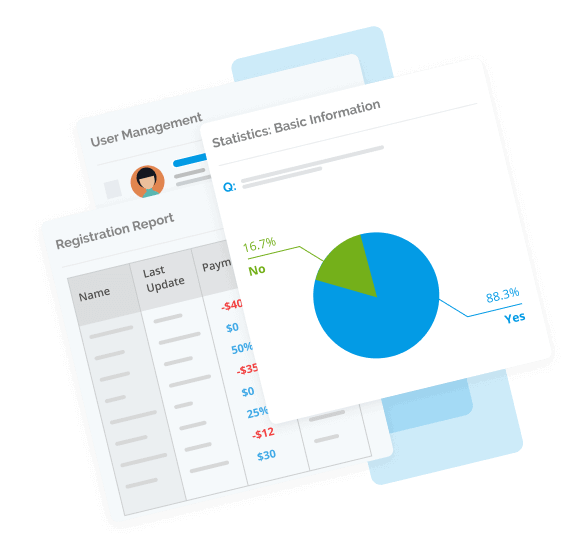
After all, if you lose a few customers, you want to be aware of the loss right away.
With that awareness, you can be agile enough to make appropriate changes before the trickle becomes an avalanche and your revenue streams suffer.
SaaS subscription management allows for a great deal of user data and information access.
You’ll want to look at metrics like:
- Monthly recurring revenue (MRR): The monthly value of added or increased accounts, minus any lost value from reduced or closed accounts.
- Customer lifetime value (LTV): The amount of gross profit generated by a customer during their entire relationship with your business.
- Customer churn rate: The rate at which customers cancel subscriptions or decline to renew.
- Customer acquisition cost (CAC): The cost of sales and marketing divided by the number of new customers for a given period.
With the data your management software gathers, you can keep tabs on your revenue, subscription gains or losses, and the costs of doing business.
4. Improved Customer Experience
In the subscription economy, customer experience (CX) and customer satisfaction are key to growth.
Your customers want a seamless experience of your product, from onboarding, through payments and billing, to the day-to-day use of your software.
Therefore, the goal for your business should be to provide maximum value and minimum effort for your customers.
By using SaaS subscription management software, you’ll be well-placed to deliver a higher level of CX throughout each stage of your customer’s lifecycle.
As soon as the customer subscribes, your software will send an automated receipt and begin the onboarding process promptly.
Then, existing customers will receive automated invoices and payment notifications at each billing cycle.
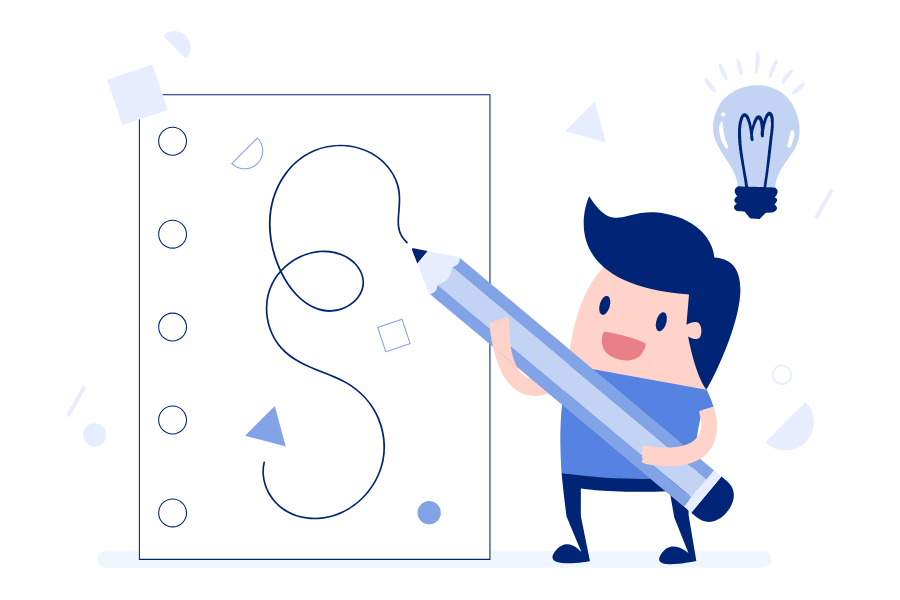
Your subscription management system will keep customers in the loop with regular notifications, coupons, and discounts. And if (and when) they have a question or concern, your management software will facilitate email communication so that no one falls through the cracks.
Automated billing also helps prevent human error.
Once payment information is entered into the system, your SaaS subscription management tool will take care of recurring transactions and automatically manage any failed payments or issues that arise.
Then, on the backend, you’ll be able to track any failed payments easily.
5. Improved User Security
Your customers need to feel that their data and that of their customers is safe in your hands.
As technology improves and more data is shared digitally, there are also more threats—and thanks to the COVID-19 pandemic, cyberattacks increased in 2020 at an even more dramatic pace.
As a SaaS company, your product is managed from start to finish by the provider: you.
Everything is conducted over the cloud rather than stored on-site. This increase in availability and ROI comes with a cost, though.
Your cloud solution needs to have safeguards to protect your clients’ data from breaches and attacks.
Many regulatory bodies have issued security guidelines for protecting sensitive customer data that SaaS companies must pay attention to.
This includes the aforementioned Payment card industry (PCI) regulations, as well as General Data Protection Regulation (GDPR), and EU-US and Swiss-US Privacy Shield Frameworks.
In a nutshell, your SaaS product’s security has three components:
- Your infrastructure, or the base layer of software used for your product’s foundation, such as cloud storage and hosting)
- The network, or the secure connection to your product
- The application and software used in the product function, both on the client and server sides
To ensure security for your SaaS product, it’s up to you to make sure you can restrict access to your cloud, network, and infrastructure to the right users.
Choose a well-constructed SaaS subscription management software that is built with security in mind, and you’ll help ensure the safety of your customer data.
Remember, when you have your clients’ trust, you’ll have their business.
How to Find the Right Solution
With all the software options available, it can be tricky to decide which subscription management platform is best for your SaaS company.
The right software should align with your business’s goals and objectives, as well as be able to grow with you—and it should be flexible and customizable enough to meet your unique requirements.
Make sure to focus on capabilities that maximize your customer experience.
It’s easy to be dazzled by a plethora of impressive features, but the best software will have the right capabilities to minimize friction and enhance every stage in the customer lifecycle.
Features to Look For in a SaaS Subscription Management System
Look for the following attributes in your SaaS subscription management software of choice:
- Flexible subscription options for the customer. Your users should be able to subscribe, unsubscribe, pause, or reschedule their subscription billing date easily. The right program will also include mobile-friendly options for collecting payments on any device.
- Automated billing and customizable workflows. The tool you choose should have the ability to send automated invoices, receipts, and billing on a set payment schedule. tIt should also let you create customized workflows for registration and subscription processes.
- Ability to collect payments from a flexible range of payment options, including debit and credit cards, wire transfer, PayPal, Amazon Payments, Stripe, etc.
- Integration with accounting and sales. It should let you create, save, and run sales and payment reports to simplify your accounting process. The right solution should also provide payment reports that can be customized for your needs, including the transaction ID, payment method, status, any system remarks, allocation, and payee information.
- Automatic communication tools. Create email templates for invoice reminders, welcome and onboarding emails, and trigger-based emails to respond to subscriber’s specific actions.
You should also be sure to look for positive customer reviews. Does the software you have in mind have a proven track record?
SaaS Subscription Management: Your Key to Success
The subscription model has become the hottest new trend in the software industry for a reason.
It turns one-time customers into recurring subscribers, helping stabilize and improve revenue streams and allowing for long-term customer relationships.
However, this model comes with its own challenges.
Customer retention is now the top priority, which means that the way you manage their account should be meticulous, holistic, and customized.
In a subscription business structure where the goal is to provide maximum value and minimum effort for your customers, a quality SaaS subscription management tool is a must.





